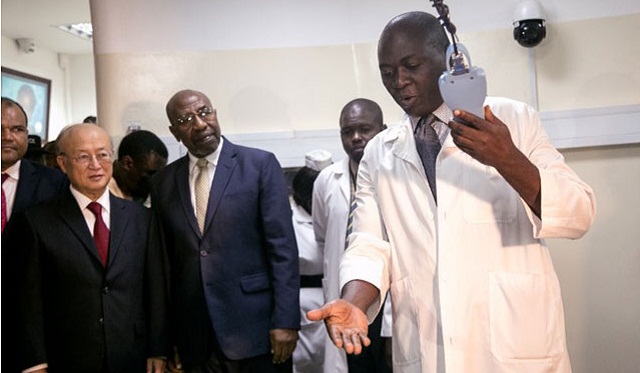
Challenges and hope
However experts like Dr. Ian Clarke, the proprietor of the Private International Hospital Kampala, hold reservations about the said radiotherapy machines. In an earlier interview with the Independent, Clarke, for instance, said the new one is just a newer version of the old machine they had. He explains that the challenge with that type of machine is that it’s not as specific as the Linear Accelerator would be in terms of where the radiation goes. He advises that the government should consider procuring a Linear Accelerator estimated to cost at least $5million, approximately the price of six of the new machine.
Clarke, a cancer survivor who is an advocate of health insurance says, to afford top-notch cancer care, public and private health providers need to cooperate. He says this has failed to happen because the public facilities such as the Uganda Cancer Institute feel that they have the major prerogative in treating cancer, yet there are hospitals coming up which can also offer such treatment.
He says the private facilities cannot easily invest in a Linear Accelerator, especially if one knows that patients will not be able to afford the treatment, while the rich people will still go out of the country. He says it would be best if the government allocates a subsidy, either to the setting up of the equipment or by subsidising the bills for the patients.
Clarke says with advancements in technology, however, treatment has become more complex and very soon Uganda will require more than just a radiotherapy machine. Already elsewhere, techniques such as positron emission tomography and computed tomography (PET/CT) in one machine and Positron emission tomography–magnetic resonance imaging (PET-MRI) scans are being used in treatment. He says these machines require a radioactive material with a short half-life which must be manufactured in the country or at the very least in the region, since the short half-life means that it will break down and be useless within six hours. The manufacture of this radioactive material requires a machine called a Cyclotron which has not yet been installed in Uganda and the East African region.
For now, however, patients at the Uganda Cancer Institute are happy that they can at least get treatment. When we spoke, Atiang had been undergoing chemotherapy, another form of treatment involving use of drugs to shrink the cancer tumor. But her doctor had already briefed her about what to expect after the surgery, including radiotherapy; a form of cancer treatment that involves hitting cancer cells with a beam of radiation to kill off cancerous cells.
“After surgery the doctor said I might be here for more three to four weeks,” she said, “You know these days they put you on the list for the machine quickly.”
 The Independent Uganda: You get the Truth we Pay the Price
The Independent Uganda: You get the Truth we Pay the Price



